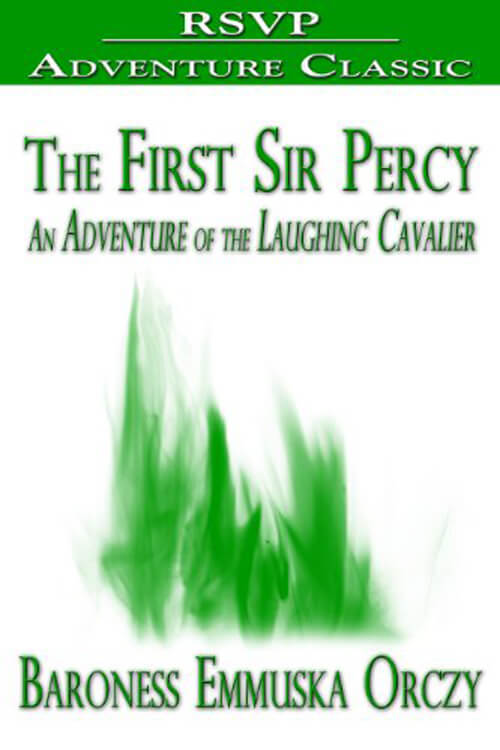
The Dawn of Canadian History, A Chronicle of Aboriginal Canada
We always speak of Canada as a new country. In one sense, of course, this is true. The settlement of Europeans on Canadian soil dates back only three hundred years. Civilization in Canada is but a thing of yesterday, and its written history, when placed beside the long millenniums of the recorded annals of European and Eastern peoples, seems but a little span.
But there is another sense in which the Dominion of Canada, or at least part of it, is perhaps the oldest country in the world. According to the Nebular Theory, the whole of our planet was once a fiery molten mass gradually cooling and hardening itself into the globe we know. On its surface moved and swayed a liquid sea glowing with such a terrific heat that we can form no real idea of its intensity. As the mass cooled, vast layers of vapor, great beds of cloud, miles, and miles in thickness, were formed and hung over the face of the globe, obscuring from its darkened surface the piercing beams of the sun. Slowly the earth cooled, until great masses of solid matter, rock as we call it, still penetrated with intense heat, rose to the surface of the boiling sea. Forces of inconceivable magnitude moved through the mass. The outer surface of the globe as it cooled ripped and shriveled like a withering orange. Great ridges, the mountain chains of today, were furrowed on its skin. Here in the darkness of the prehistoric night there arose as the oldest part of the surface of the earth the great rock bed that lies in a huge crescent around the shores of Hudson Bay, from Labrador to the unknown wilderness of the barren lands of the Coppermine basin touching the Arctic sea. The wanderer who stands today in the desolate country of James Bay or Ungava is among the oldest monuments of the world. The rugged rock which here and there breaks through the thin soil of the infertile north has lain on the spot from the very dawn of time. Millions of years have probably elapsed since the cooling of the outer crust of the globe produced the solid basis of our continents.
The ancient formation which thus marks the beginnings of the solid surface of the globe is commonly called by geologists the Archaean rock, and the myriads of uncounted years during which it slowly took shape are called the Archaean age. But the word ‘Archaean’ itself tells us nothing, being merely a Greek term meaning ‘very old.’ This Archaean or original rock must necessarily have extended all over the surface of our sphere as it cooled from its molten form and contracted into the earth on which we live. But in most places, this rock lies deep under the waters of the oceans, or buried below the heaped-up strata of the formations which the hand of time piled thickly upon it. Only here and there can it still be seen as surface rock or as rock that lies but a little distance below the soil. In Canada, more than anywhere else in the world is this Archaean formation seen. On a geological map, it is marked as extending all around the basin of Hudson Bay, from Labrador to the shores of the Arctic. It covers the whole of the country which we call New Ontario, and also the upper part of the province of Quebec. Outside of this territory, there was at the dawn of time no other ‘land’ where North America now is, except a long island of rock that marks the backbone of what are now the Selkirk Mountains and a long ridge that is now the mountain chain of the Alleghanies beside the Atlantic slope.
Books on geology trace out for us the long successive periods during which the earth’s surface was formed. Even in the Archaean age, something in the form of life may have appeared. Perhaps vast masses of dank seaweed germinated as the earliest of plants in the steaming oceans. The water warred against the land, tearing and breaking at its rock formation and distributing it in new strata, each buried beneath the next and holding fast within it the fossilized remains that form the record of its history. Huge fern plants spread their giant fronds in the dank sunless atmospheres, to be buried later in vast beds of decaying vegetation that form the coal fields of today.
Read or download Book
Stephen Leacock
Stephen P. H. Butler Leacock (30 December 1869 – 28 March 1944) was a Canadian teacher, political scientist, writer, and humorist.
Biography.
Between the years 1915 and 1925, he was the best-known English-speaking humorist in the world. He is known for his light humor along with criticisms of people’s follies. Stephen Leacock was born on 30 December 1869 in Swanmore, a village near Southampton in southern England. He was the third of the eleven children born to (Walter) Peter Leacock (b.1834), who was born and grew up at Oak Hill on the Isle of Wight, an estate that his grandfather had purchased after returning from Madeira where his family had made a fortune out of plantations and Leacock’s Madeira wine, founded in 1760. Stephen’s mother, Agnes, was born at Soberton, the youngest daughter by his second wife (Caroline Linton Palmer) of the Rev. Stephen Butler, of Bury Lodge, the Butler estate that overlooked the village of Hambledon, Hampshire. Stephen Butler (for whom Leacock was named), was the maternal grandson of Admiral James Richard Dacres and a brother of Sir Thomas Dacres Butler, Usher of the Black Rod.
Leacock’s mother was the half-sister of Major Thomas Adair Butler, who won the Victoria Cross at the siege and capture of Lucknow in India. Peter’s father, Thomas Murdock Leacock J.P., had already conceived plans eventually to send his son out to the colonies, but when he discovered that at age eighteen Peter had married Agnes Butler without his permission, almost immediately he shipped them out to South Africa where he had bought them a farm. The farm in South Africa failed and Stephen’s parents returned to Hampshire, where he was born. When Stephen was six, the family moved to Canada, where they settled on a farm near the village of Sutton, Ontario, and the shores of Lake Simcoe. Their farm in the township of Georgina was also unsuccessful, and the family was kept afloat by money sent from Leacock’s paternal grandfather. Stephen’s father, Thomas, became an alcoholic; in the fall of 1878, Thomas traveled west to Manitoba with his brother E.P. Leacock (the subject of Stephen’s book My Remarkable Uncle, published in 1942), leaving behind Agnes and the children. Stephen Leacock, always of obvious intelligence, was sent by his grandfather to the elite private school of Upper Canada College in Toronto, also attended by his older brothers, where he was top of the class and was chosen as head boy. Leacock graduated in 1887 and returned home to find that his father had returned from Manitoba.
Soon after, his father left the family again and never returned. There is some disagreement about what happened to Peter Leacock. One scenario is that he went to live in Argentina, while other sources indicate that he moved to Nova Scotia and changed his name to Lewis. In 1887, seventeen-year-old Leacock started at University College at the University of Toronto, where he was admitted to the Zeta Psi fraternity. His first year was bankrolled by a small scholarship, but Leacock found he could not return to his studies the following year because of financial difficulties. He left university to work as a teacher—an occupation he disliked immensely—at Strathroy, Uxbridge, and finally in Toronto. As a teacher at Upper Canada College, his alma mater, he was able simultaneously to attend classes at the University of Toronto and, in 1891, earn his degree through part-time studies. It was during this period that his first writing was published in The Varsity, a campus newspaper. Disillusioned with teaching, in 1899 he began graduate studies at the University of Chicago under Thorstein Veblen, where he received a doctorate in political science and political economy. He moved from Chicago, Illinois, to Montreal, Quebec, where he eventually became the William Dow Professor of Political Economy and long-time chair of the Department of Economics and Political Science at McGill University. He was closely associated with Sir Arthur Currie, former commander of the Canadian Corps in the Great War and principal of McGill from 1919 until he died in 1933. Currie had been a student observing Leacock’s practice teaching in Strathroy in 1888.
In 1936, Leacock was forcibly retired by the McGill Board of Governors—an unlikely prospect had Currie lived. Leacock was both a social conservative and a partisan Conservative. He opposed giving women the right to vote, and had a mixed record on non-English immigration, having written both in support of expanding immigration beyond Anglo-Saxons before World War II and in opposition to expanding Canadian immigration beyond Anglo-Saxons near the close of World War II. He was a staunch champion of the British Empire and the Imperial Federation Movement and went on lecture tours to further the cause. Despite his conservatism, he was a staunch advocate of social welfare legislation and wealth redistribution. He is considered today by some a complicated and controversial historical figure for his views and writings. He was a longtime believer in the superiority of the English and could be racist towards blacks and Indigenous peoples. Although Prime Minister R. B. Bennett asked him to be a candidate for the 1935 Dominion election, Leacock declined the invitation. He did stump for local Conservative candidates at his summer home.






